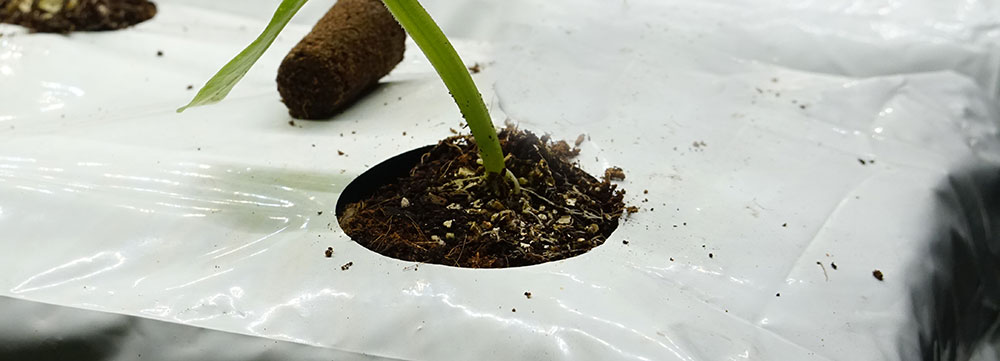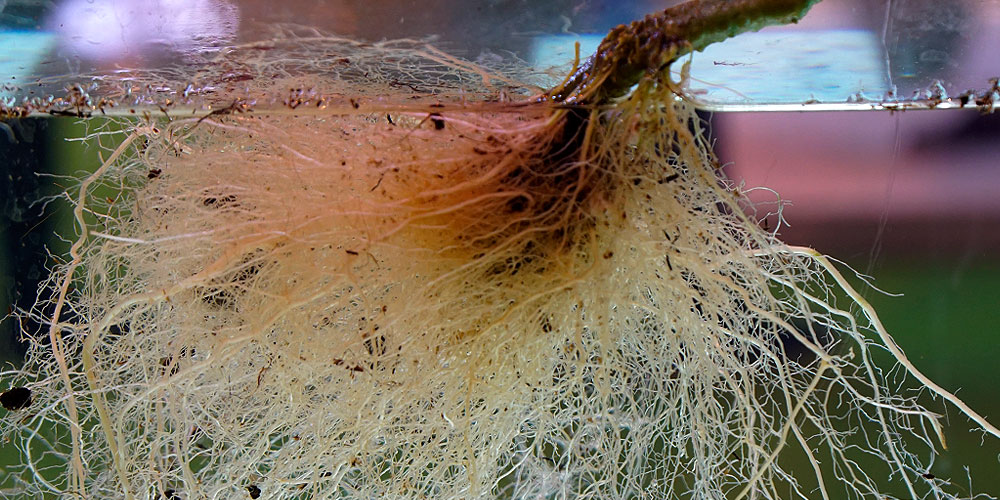When we are referring, according to a botanical point of view to the root system, also called a radical system or root system in some countries, we do so to the set of roots that develop the same plant.
Types of root systems
The root is the organ by excellence of absorption of water and nutrients, as well as support of adult plants, since we also find the term radicle, which identifies the temporal organ that is presented during the germination of seeds and disappears at the end of the seedling phase.
The root system presents different variables depending on the genus and even the species. Pivoting or axonomorphic, fasciculated, napiform, branched, tuberous or adventitious roots are examples of this.
Taking about root development, the method of reproduction of the plant also influences because, for example, a certain plant that when germinating develops by its genetics a pivoting root, when it is multiplied via cutting or in vitro, its root system will lose this condition in favor of a fasciculated one.
These roots, in their natural development, will evolve better or worse during their life, conditioned by the physical and chemical characteristics of the soil, as well as climatic.
They also do it according to the cultural practices carried out during their cultivation, for example, if it is grown with localized irrigation by inundation or by foliar application. Under these different techniques, the distribution of water and nutrients in the soil or substrate varies and as a consequence the root exploration in it.
In all this context, the root apparatus also evolves over time, since it is associated with the cultivation phase in which it is located.

Biostimulants inducing root development
Whether fruit, horticultural or ornamental crops, a good root system will be part of the profitability of the crop, because it actively participates in the good nutritional status of the plant. And not only in this, but also indirectly in their health status, because stronger plants are also healthier plants.
As we have advanced, the phenological state in which a plant is located will imply a certain state of its root system and, consequently, the field technician will be able to assess whether or not it is convenient to act to improve or help its root development. We can define it as punctual assistance to improve the root system.
These moments usually concur with specific cultivation dates, for example, in transplantation or planting, late winter times and even during cutting. Phases where you can stimulate the formation of new roots, improving the architecture of the root system and achieve a better settlement of the crop in the soil.
Biostimulant products to enhance root development
JISA has developed and formulated different biostimulants to enhance the development of the root system. And one of them, the most specialized for its application in strategic phases, is Raici.
Raici is a special formulation based on synthetic amino acids and NPK, especially indicated to act in times of rooting in horticultural, cuttings and seedlings.
But it is also very efficient when it is applied in adult crops, both herbaceous and fruit trees, acting in the regeneration of the root mass, so the use of all nutrients by the plant is optimized.
In its formulation there are certain free amino acids, which induce the formation of new roots, achieving a better settlement of the crop in the soil. In its aminogram (set of amino acids present) are Tryptophan, Methionine, Glycine, Lysine, Glutamic, Aspartic and Threonine, for instance.
Mode and dose of use of a root inductor
The way of use of a root inductor varies depending on the type of plant, state and, of course, also if it is in cultivation or is in the cutting phase.
In the case of Raici, in horticultural plants (tomatoes, peppers, eggplants, melons, watermelons, zucchini, etc.) it is recommended to applicate it in located irrigation in 2 to 3 applications after transplantation. Already in advanced cultivation, it is also advisable to make sporadic applications with the aim of helping the root regeneration.
Regarding fruit trees (pear, apple tree, peach, plum, apricot, kiwi, kaki, pomegranate, etc.), citrus, olive, vine, banana and tropical crops (mango, avocado, custard apple, papaya, pitahaya, …), it is recommended to provide it in irrigation after planting. Two applications in the first irrigations are suitable. In adult plantings, it is interesting to make an application after the winter stop.
A very good technique that show great results, considered by JISA technicians as a “complementary application”, it’s immersing the roots at the time of planting in a dilution of Raici in water. The dosage varies between horticultural and fruit seedlings. Therefore, a prior consultation is advisable.
This method of dissolution it is also recommended to improve the rooting of cuttings and cuttings.
Ecological inducers of root development
It is possible to have a organic root stimulator? The answer is yes, as long as the raw materials used in its formulation are adequate and also the final product is certified by a competent entity.
For using in organic farming, JISA has developed EcoRaici. It’s formulated with high quality organic substances, which, applied to plants, increases the surface of their root system and favors the exchange of substances between root and beneficial microorganisms of the rhizosphere, such as rhizobacteria and mycorrhizae.
Certainly, EcoRaici, through the international Control and Certification Institution CAAE, has the Compatibility Confirmation for the ‘Use of Inputs in Organic Agriculture‘. Product certified and compatible with integrated management and organic production programs.
